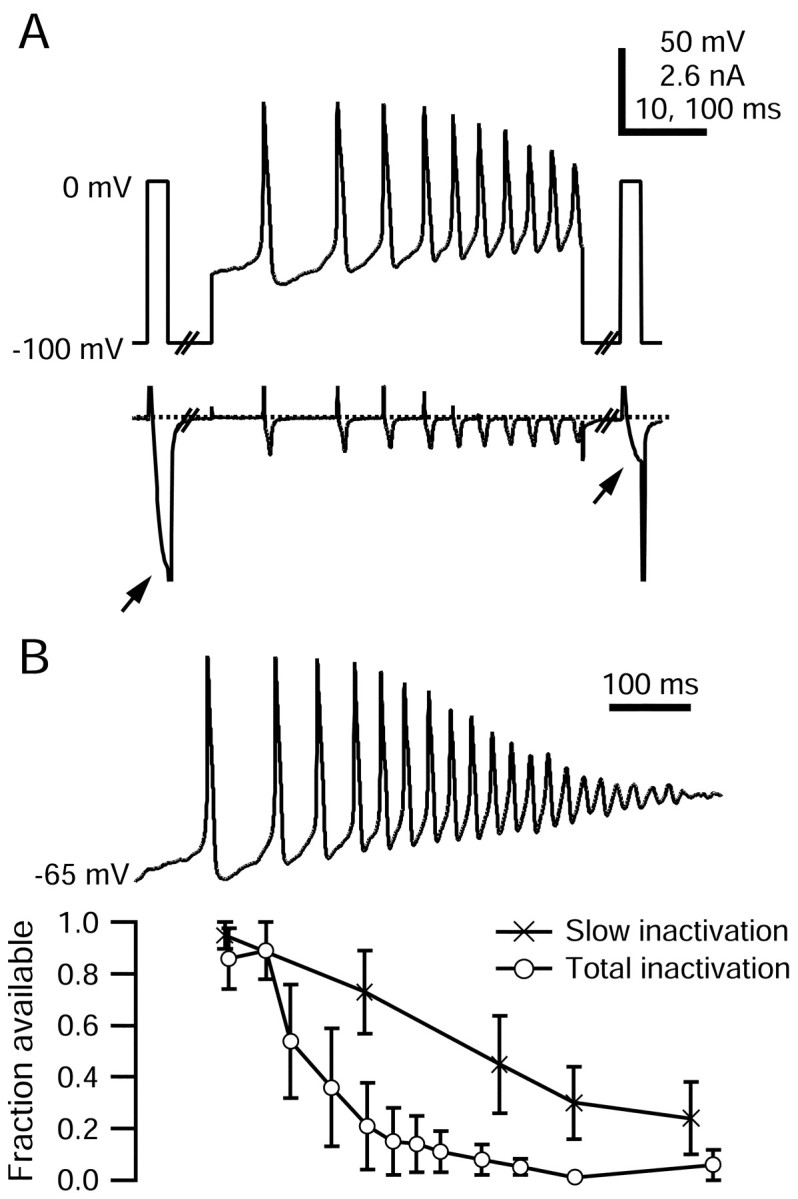Figure 9.

Inactivation of TTX-R sodium current during capsaicin response. A, Voltage protocol and TTX-R sodium currents evoked during a single sweep to measure slow inactivation elicited by an ∼490 msec segment of the capsaicin response. TTX-R sodium currents during 2.5 msec test steps to 0 mV (arrows) are shown on an expanded time scale. A 30 msec step to -100 mV preceded the second test pulse to remove fast inactivation. Large inward tail currents flowing during repolarizations to -100 mV have been truncated. Persistent sodium current between spikes is compressed because of the vertical scale. The internal solution contained the following (in mm): 130 NMDG, 120 aspartate, 15 NaCl, 1.8 MgCl2, 9 EGTA, 9 HEPES, 4 MgATP, 14 Tris-creatine PO4, and 0.3 Tris-GTP, pH 7.4 (with 7 mm CsOH). The external solution contained the following (in mm): 50 NaCl, 100 TEA-Cl, 4 CsCl, 2 CaCl2, 2 MgCl2, 0.03 CdCl2, 10 glucose, and 10 HEPES, pH 7.4 (with TEA-OH). B, Fraction of TTX-R sodium current available (second test step current normalized to the first) plotted as a function of time during the capsaicin response. Total inactivation (open circles) was measured with test steps directly to 0 mV; slow inactivation (crosses) was measured with test steps preceded by hyperpolarizing pulses to remove fast inactivation. Error bars indicate SD.
